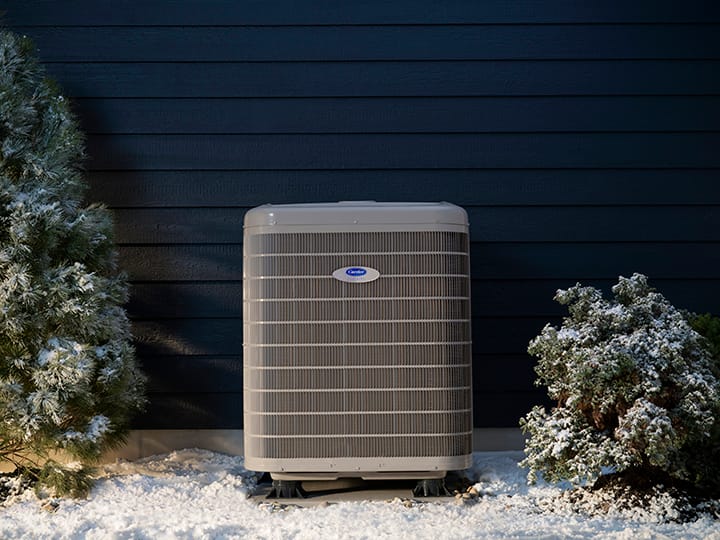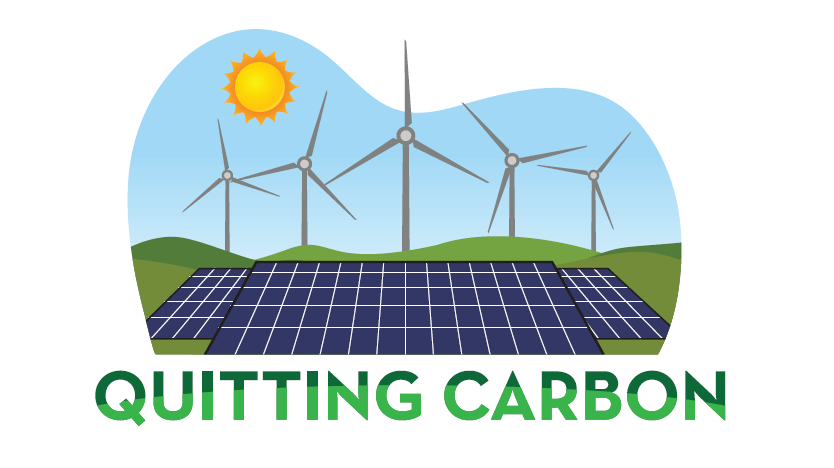Here's how to accelerate U.S. heat pump sales
In a conversation with Quitting Carbon, Northeast Energy Efficiency Partnerships’ Dave Lis describes what it will take to get heat pumps into the millions of U.S. buildings that need them.

Quitting Carbon is a 100% subscriber-funded publication. To support my work, please consider becoming a paid subscriber or making a one-time donation.
Heat pump sales are on the rise in the United States.
From April 2024 through March of this year, 4.2 million electric heat pumps were sold in the U.S., and heat pumps outsold gas furnaces by 28%, according to a market tracker maintained by the clean energy think tank RMI.
Even so, challenges remain in getting heat pumps installed in tens of millions of homes and businesses, as will be needed to decarbonize U.S. buildings by mid-century. Soaring electricity rates nationwide, resistance from contractors, and a confusing name are among the factors preventing heat pumps from selling even faster.
To get a better sense of where the U.S. heat pump market stands and where it is headed, I reached out to one of the most knowledgeable experts I know in the sector, Dave Lis. Lis is director of technology market transformation at Northeast Energy Efficiency Partnerships (NEEP), a Massachusetts-based nonprofit that convenes stakeholders and shares best practices to advance the energy efficiency market across the Northeast and Mid-Atlantic regions.
NEEP recently published a Northeast market assessment (PDF) that digs into regional heat pump trends. The report finds that air-source heat pump sales across New England and New York increased by 250% over an eight-year period (2013 to 2021). Because the Northeast has outpaced the rest of the U.S. in heat pump deployment, the region has much to teach the rest of the country.
Lis and I spoke about why the Northeast heat pump market is so strong, what can be done to address the electricity affordability challenge, the potential loss of federal tax credits for heat pumps, and whether the name “heat pump” should be dropped.
“The talk of the region over the last six to 12 months has been about this issue of affordability,” Lis told me.
This conversation has been edited for length and clarity.

One of the key takeaways from NEEP’s market assessment report is that the Northeast has outpaced the rest of the country with its heat pumps sales. What is the region doing right?
There's a very robust landscape of promotional and incentive programs that are reducing upfront costs for installations. Marketing and education around heat pumps to consumers – largely through the efficiency programs throughout the region – have raised more awareness of the opportunities.
The incentives help with reducing costs. The region is home to a lot of delivered fuels. There's an additional cost driver in that. And frankly, there has been, over the last 10 years, a growth of interest in cooling and heat pumps. A lot of the ductless technologies are a really good retrofit for folks looking for cooling.
This has been a more recent development, but in the middle of last year Northeast states signed on to a multi-state agreement (PDF) through NESCAUM, which is a regional organization of air quality agencies. Those states committed to a 65% heat pump market share goal by 2030.
One big challenge is affordability. In California and in the Northeast, electricity rates are double the national average. With new large electrical loads in the home, such as an air-source heat pump or heat pump water heater, there's concern over consumers bearing the cost of making that switch. Some jurisdictions are rolling out special rates for heat pumps. Can you talk about solutions that address affordability concerns?
There's a couple of different flavors to the affordability question. For many years, it was oil versus electricity, and heat pumps versus existing oil and propane equipment was very economically beneficial. That has shrunk as electric prices have jumped up, and some of the oil and propane prices have come down. In most analyses, that tends to still be a cheaper way to go. It always saves a lot of energy, and a lot of money compared to existing electric resistance.
Existing natural gas customers are the next frontier, and the economics, in many cases, are negative in terms of operational economics. The biggest approaches to addressing that have been developing heat pump-specific rates.
A couple of jurisdictions in Maine already have them available to customers. There's been some quick action in Massachusetts. Unitil has a heat pump rate, and one of the larger utilities in Massachusetts, National Grid, had their heat pump-specific rate approved by regulators, and they plan on rolling that out in November. Eversource, the other big utility in Massachusetts, is expected to have heat pump-specific rates available to customers by the next heating season.
These would be seasonal rates. It's mainly focused on a reduced kilowatt-hour winter rate, behind the idea that a lot of usage would be at night, when wholesale electricity prices are cheap, so it's more reflective of the actual cost of procuring that electricity to make it available to customers.
NEEP has gotten a lot of requests for technical assistance around rates. Rates are a complex and complicated mechanism. It does have a lot of unintended consequences when you push on different levers with rates. Electrification and efficiency and managing existing peaks with rates can be a multi-variable challenge.
The heat pump rate has emerged as a pretty clean way of sending customers a more positive economic signal to save money by running their heat pump. That's an exciting area as we think about trying to improve the value proposition for consumers to adopt heat pumps. If we can make that a stronger economic argument, we will see more adoption.
We also have a lot of systems in the field today that are dual system or dual fuel. Customers have a heat pump, but they still have their existing fossil heating system. With that signal, it might, from a behavioral standpoint, drive those users to use heat pumps more than they are today. Shifting that usage from fossil fuel over to heat pumps would be another good result from a better rate.
If we can reduce the overall heating and cooling loads of homes and buildings with weatherization, then, even if the operational economics is flat, or even a little bit worse, you are likely to see a reduction in bills. If you're able to reduce that heating need, that customer is going to come out ahead of where they were before.
Continuing with affordability, federal tax credits have been available to reduce upfront costs for heat pumps and other energy efficiency measures. It's looking increasingly likely that these tax credits will not survive in the budget reconciliation bills being negotiated by House and Senate Republicans. How concerned are you about the potential loss of those tax credits?
It might have less of an impact in a region like the Northeast that has a foundational landscape of programs that are helping to defray some of those costs. That doesn't negate the fact that a lot of market actors were excited that we were going to be able to stack those additional incentives, through tax credits and some of the HEAR rebates, onto existing programs. There would certainly be disappointment to see those go.
A question I hear all the time is how do we get around the fact that “heat pump” is just a bad name? How difficult is it for NEEP to educate consumers that heat pumps can both heat and cool your home? Is it a lost cause to change the name?
NEEP has developed a market transformation strategy for air-source heat pumps going back to 2014 and in that strategy there were calls for considering or thinking about new names, or just how heat pumps were presented to consumers. This issue of a disconnect, or a name that doesn't necessarily resonate strongly with consumers, has been on the minds of market actors and folks that are interested in developing this market for well over a decade now. If there was some breakthrough, or something creative in the naming that the industry, whether it's manufacturers or contractors or advocates, I'd support it and the states in the Northeast and the actors here in the Northeast would, too.
In the meantime, we need to continue the general education around trying to dispel some of the myths and create some basic understanding of what the technology can do. Increasing the organic familiarity with consumers, seeing their neighbors adopt the technology and get practical experience with the technology, realizing, Oh, it's not as foreign a concept or a piece of equipment as I thought, grounds what “heat pump” is in their minds.
For a long time, people say “heat pump,” and they just can't really attach it to something in somebody's home. Connecting a heat pump to solutions that mean something to consumers, who for the most part have developed a positive perception of them, is huge.
Speaking of myths that persist about heat pumps, one you're familiar with is that heat pumps don’t work in extreme cold. Has there been progress in dispelling that myth considering how much heat pumps have improved in recent years and the success of cold-climate models in markets like Maine?
Contractors are the ones who are often leading with this message of: "You don't want to rely on this technology by itself, particularly at low temperatures." They're very risk averse. They're going to need to have a lot of experience with this technology. The new contractors in the heat pump space are delivering that message regularly to consumers. That's unfortunate.
But on the flip side, because the market has grown, it's not quite as niche a technology as it was a decade ago in the Northeast. There's just enough of your neighbors and your relatives who have adopted heat pumps and have seen the performance at low temperatures and can communicate that to their networks. There's nothing more powerful than a neighbor or somebody in your family or friend group that vouches for new technology.
On the program side, we're seeing a shift that will support greater awareness and confidence in low-temperature performance. Programs are moving away from a partial displacement model – incentivizing heat pumps that can be used in conjunction with an existing system or not.
Several programs in the Northeast have been applying sizing requirements to some of their larger rebates. By sizing a system to meet a home or building’s entire heating load, there should be more confidence and more awareness to the consumer this is a whole-home solution. There's no need to toggle back to a second system. That's going to drive more of these whole-home systems and confidence that if it's 5˚F or 0˚F out, my heat pump is operating. It's keeping the house warm. I'm not sacrificing anything.
Is there a jurisdiction that is doing really well with heat pump deployment? Maine justifiably gets a lot of attention. But is there another market that doesn't get enough press?
Maine, Vermont, Massachusetts, and New York, what these programs have realized is that engaging contractors and distributors, incentivizing them with real dollars, but also in partnership and education, and the investment of time, makes a really big difference.
There is a growing trend around the importance of contractors. They are the front line of heat pump adoption, and if they're not aware of and confident in the solution, they're not going to steer their customers towards that regardless of whether there's a big incentive or not. They really have to believe in it.
Part of the secret sauce of the programs that have really been growing is their upstream engagement with contractors and distributors and even manufacturers. Instead of simply offering $1,000 rebate to consumers, it's critical that the supply side really believes in it and is excited about delivering what you hope is the solution the consumer understands and wants.
There are some organizations at the community level that have really helped support consumers in understanding the technology. The HeatSmart Alliance supports a lot of community-based groups within towns in Massachusetts. They are volunteer-based groups that essentially provide coaching and handholding to neighbors and folks from their communities. It's very unbiased; nobody's selling anything. It is a way of educating about the technology and helping customers navigate the buying process, understanding what they should be asking for, what systems might be most appropriate for their homes, and hearing it from an unbiased perspective.
Massachusetts is rolling out fossil-free new construction in some towns with the Municipal Fossil Fuel Free Building Demonstration Program. In those towns, new homes are going to be built without fossil fuels. Those are typically the easiest applications to apply air-source heat pumps and other heat pump technologies. To formalize that in a code could be pretty powerful.
In the Northeast, a lot of states have set a 2030 goal, which is really helpful to send that signal to the broader market that we are serious about transitioning to this technology. There's a whole suite of policies that are being considered and adopted. We talked a little bit about codes. Emission-based appliance standards that states are considering would certainly have a lot of impact on the market and are likely to move consumers to electric technologies.
Building performance standards are a mechanism for the existing building stock, and we've largely seen that to date in the commercial sector. New York City has a carbon-based building performance standard, which has driven quite a bit of electrification in the city.
In New England and the rest of the Northeast region, a lot of the energy efficiency funding and dollars can be used for existing fossil customers. That fuel switching allowance has really opened a lot of energy efficiency dollars. That still is a barrier for a lot of programs outside of our region.
Everything from very high-level policies down to more of that community level consumer, the market is getting boosted with financial incentives, with marketing, with education. Hopefully that's the launching point for the next five years, so we can see that continued growth happen, and in 2030 we have a success story to talk about in this market transformation effort.




